Adding horsepower to a diesel pickup truck is not a new concept. Ever since the mid to late 90’s when diesel powered trucks became more common, enthusiasts have been adding tons of horsepower and torque to their engines, and an entire industry has grown to support high performance diesel. A decade ago, if you were to say you had a 2,000whp diesel powered pickup, you would be called a liar and get dismissed without a second thought, but in the last couple years, innovations have been made and limits have been pushed beyond what you could ever imagine. This year at the All-Truck Challenge, Chris Patterson and the crew at Unrivaled Diesel were the first to crack the 3,000-horsepower mark, with a dyno run of 3,089hp and 3,949lb.ft. of torque AT THE REAR WHEELS. As impressive as their bright green Cummins powered dually is, it’s a benchmark that most drivers will never experience, but it just illustrates how far diesel performance has come in the last couple years.

The one thing diesel enthusiasts seem to enjoy most of all is how much power can be gained with so little effort. It’s commonplace to be able to add another 100 to 150 horsepower and 300 pounds of toque to a diesel engine with nothing more than some electronic tuning, and those gains are simply not possible from a gasoline engine with so little work. Unfortunately, there are many misconceptions floating around about what works and what issues you can encounter while adding horsepower to your diesel engine, so today we will look at the most common myths and find out what’s true, and what is not.
The Engine Can Only Take What the Factory Tuned It For
A logical thought process could easily lead you to the conclusion that the factory has perfectly optimized longevity with the maximum power the engine can produce, and if you add just 10 more horsepower, the life span of the engine will decrease significantly. While it is true that you can cause catastrophic damage to any engine by creating too much horsepower, the reality is all modern diesel engines have a significant margin of safety and can easily handle most performance modifications without affecting the lifespan of the engine at all, if done properly. That’s an important “if” and we’ll talk about the dos and don’ts in a bit, but as a blanket statement, your engine won’t be harmed by adding most common bolt-on modifications.
There is one important caveat here worth mentioning, and this has to do with the rest of the drivetrain handling the increased power and torque. Part of the reason why the factory leaves so much capacity on the table is to protect the transmission. While most 3/4 ton and 1-ton diesels have a bulletproof transfer case and axles, the transmission is the weakest link across the board. Every brand of transmission has a different threshold for how much extra torque it can handle, but Ford, Ram, and GM alike will all give you problems if you get too eager with the “hot” tune, especially with a trailer on the back. If you want to go fast with a heavy diesel truck, you should expect to spend a few dollars on the transmission at some point.
Adding Power Will Reduce Fuel Economy
The biggest misconception about modifying diesel engines is that adding more horsepower will lower your overall fuel efficiency. Most people think of tuning in terms of the peak horsepower increase, and sure, if you are operating an engine at its peak power output all the time and you will burn more fuel. However, a quality performance tune can gain power in ways other than just adding fuel. Injection timing is optimized, boost pressure can be raised, and fuel rail pressure can be increased, all of which will make for more efficient combustion. In short, a proper ECU tune will get the most energy out of every gallon of fuel you burn, which can translate into a gain in fuel mileage, rather than a loss. Most companies don’t advertise specific MPG gains with their tuning because there are so many factors involved, and something as simple as a larger than stock tire can offset any increase in fuel mileage, but if you’re afraid custom tuning and added power will kill your fuel mileage, think again! In addition to tuning, airflow modifications which lower resistance and let more air into the engine will also have a positive effect on how much fuel is burned as well as the total power output.
Adding Power Always Means an Increase of EGT
The number one parameter you need to monitor on a modified diesel engine is the exhaust gas temperature, or EGT. A good rule of thumb when towing or using the truck to make sustained power is you want your EGT under 1,500 degrees Fahrenheit, but if you’re in a racing situation with short applications of full power, you can usually cheat that number a little higher and not be in the danger zone. The important question is will modifying your truck cause the engine to exceed those EGT limits regularly?
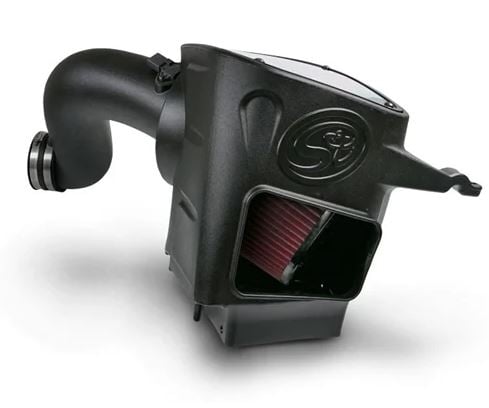
Aside from tuning, there are two major types of modifications that can add horsepower to a diesel. Parts that add fuel, and parts that add air. If you want your engine to live a long and happy life, you need to add them in the correct order to maintain the overall balance and safety of your engine. If you start your build by adding larger injectors and a higher flowing injection pump but still have a stock turbo, stock intercooler, and stock exhaust, then you absolutely have potential for a massive increase in EGT, and you can definitely cause damage to your engine in the form of melted or cracked pistons or a damaged turbocharger. Injecting more fuel without adding air to match is a recipe for disaster, so the smarter way to increase horsepower is to start by adding air. Parts like a cold air intake, high flow intake elbow, larger intercooler and charge pipes, or a slightly larger turbo and a filter back exhaust can all free up restriction in the airflow pathway, which means more air enters the engine. As you cram more air into the combustion chamber, you get a more complete burn of the fuel being injected, which keeps EGTs in check. Only after you have addressed the air handling system should you mess with the fuel system to keep air and fuel delivery in balance. If you are smart about how you modify your truck, you will be able to keep EGT’s in a safe zone while also enjoying an increase in horsepower.
Speaking of EGT, it’s worth noting that most modern diesel engines use one or more temperature sensors in the exhaust stream, so the ECU always knows how hot things are getting. In fact, the computer has the ability to limit fueling if you approach the danger zone, even on a modified application, so look for a custom tuner that keeps those functions intact. Calibrated Power (home of duramaxtuner.com) makes emissions equipped tunes that utilize all your factory sensors to safely add horsepower while keeping EGTs at the factory determined limits.
You Can’t Make Power with Emissions Equipment Intact
In the early days of high-performance diesel, it was commonplace to remove factory installed emissions equipment in the name of adding horsepower. While “race” tuned trucks could produce a ton of horsepower, the fact is most trucks with a race-only tune were operated on public highways where they fall under federal emission regulations. Luckily, the aftermarket has embraced emissions intact tuning, and you can now make more power than stock while keeping all federally mandated emissions systems in place. It’s still common to find tunes that will make almost 600 horsepower at the wheels while breathing through your stock emissions systems, which is impressive, but also has several other benefits as well. Not only does keeping your emissions system intact save you expense when modifying your truck, but it keeps the sound level of your exhaust at a minimum, it stops black soot from entering the air, but also breaks down harmful nitrogen oxides before they escape.
Luckily, emissions equipped power upgrades are not limited to tuning along, there are new hard parts coming out all the time that work in concert with your emissions system. Banks Power has just released an intake elbow for the 6.7 Cummins that flows 122% more air than stock and has a CARB EO number which means its 50-state legal. Banks also offers larger intercooler tubes for the L5P Duramax, as well as cold air intakes and DPF back exhausts systems which can reduce backpressure by 85%. You also get a 15% reduction in exhaust temp during regens, and because the tail pipe kicks out to the side, you will no longer be able to melt parts of your trailer.
Any Modification Can Void Your Warranty
The warranty question is a tricky one. While we have discussed how the axles and transfer case should have no problem handling the added torque from a modified diesel engine, more power does allow the drivetrain to operate outside of its intended parameters. Because of this, technically, any modification you make to your truck that increases the power output can void parts of the powertrain warranty. If you have a transmission failure with a tuned truck, your dealership service manager would be well within their rights to not replace it under warranty. Depending on how friendly they are to modified vehicles, they may do you a favor and look the other way, but because of the advanced on-board diagnostics on modern trucks, electronic reporting back to the manufacturer makes life a little more difficult for modification friendly service departments.
Probably the trickiest upgrade when it comes to warranty issues is a tuned ECU, because any aftermarket flash done will leave a footprint, and almost any time a truck comes in for service, the first thing the technician will do is plug into the OBD2 port and run a diagnostic check. Re-flashing the truck back to stock won’t fool their computer system. Aside from an ECU reflash, there are a few hard-part modifications that may be a little less obvious and may slide under the radar. One such example would be a set of PPE high flow exhaust manifolds and up pipes for a Duramax. Since they connect to all your factory emissions equipment they can be run without any tuning changes, and they offer improvements in airflow and reduction in exhaust gas temperature and quicker turbo spool up times, and for the most part, the service manager shouldn’t give you any flack since they may not be noticed by a service technician.
Of course, to void a warranty, the failure of the part in question must be directly related to whatever aftermarket part is installed. Your navigation system glitching has absolutely nothing to do with a larger turbo for example, so other than your powertrain, most systems on the truck should still be covered. If your local dealer is not friendly to modifications and you are worried about your powertrain failing, it might be best to hold off on the upgrades until the warranty has expired.
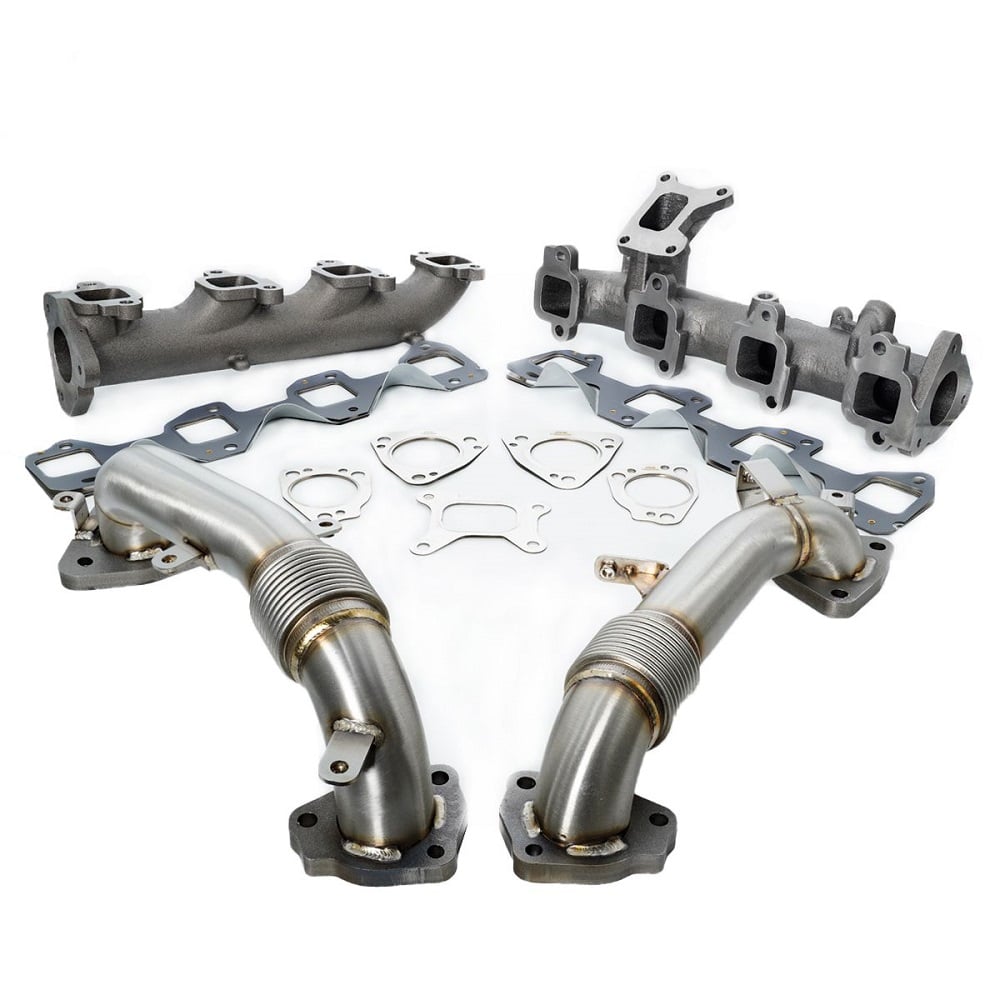
Best Modifications to Make
So now that we’ve covered the basics of modifying your diesel truck, let’s talk about some real-world examples of great modifications that will make the truck more fun to drive, more capable while hauling or towing, and of course faster, all without hurting the reliability. The first modification most owners do with the biggest impact on overall performance will be a tune.
Edge Products makes a wide range of performance tuners that cover all diesel trucks, but their latest offering makes adding power to a 2017 and newer L5P Duramax a breeze. Because of the security measures on the L5P ECM, Edge had to get creative, and the Pulsar is an ingenuous solution that allows you to add up to 90 horsepower and 156 lb.ft. of torque to your Duramax without flashing the computer. The Pulsar simply piggybacks onto your stock ECM and offers a total of five different power levels, and you can easily switch between them using the cruise control buttons. In addition to adding power, the Pulsar will also allow you to calibrate the speedometer and shift points for larger or smaller tires, raise the speed limiter, increase throttle sensitivity, and my personal favorite, adjust the threshold for the TPMS warning light so you can run lower tire pressure for a smoother ride or increased traction.
The Banks Derringer is another great option for the L5P Duramax as well as the 6.7 Powerstroke and Cummins. It’s an in-line performance module that connects to a few sensors on the engine as well as the OBD2 port, and it increases rail pressure and turbo boost for a healthy bump in power and torque, and it leaves no digital footprint in your stock computer which means no hassle at the dealer.
After you have your tuning installed and you want an additional bump in horsepower, there are some hard parts you can install to lower EGT and raise power. Airflow modifications are the name of the game here, which usually starts with a cold air intake and perhaps a DPF back exhaust. Next, you can install an aftermarket intercooler with larger charge pipes which will allow the hot air compressed by the turbocharger to be cooled off further than stock which means denser air enters the engine, leading to more power and cooler EGT. After those basic parts, you could consider exhaust manifolds and up pipes, or even a turbo upgrade if you’re really serious about power.
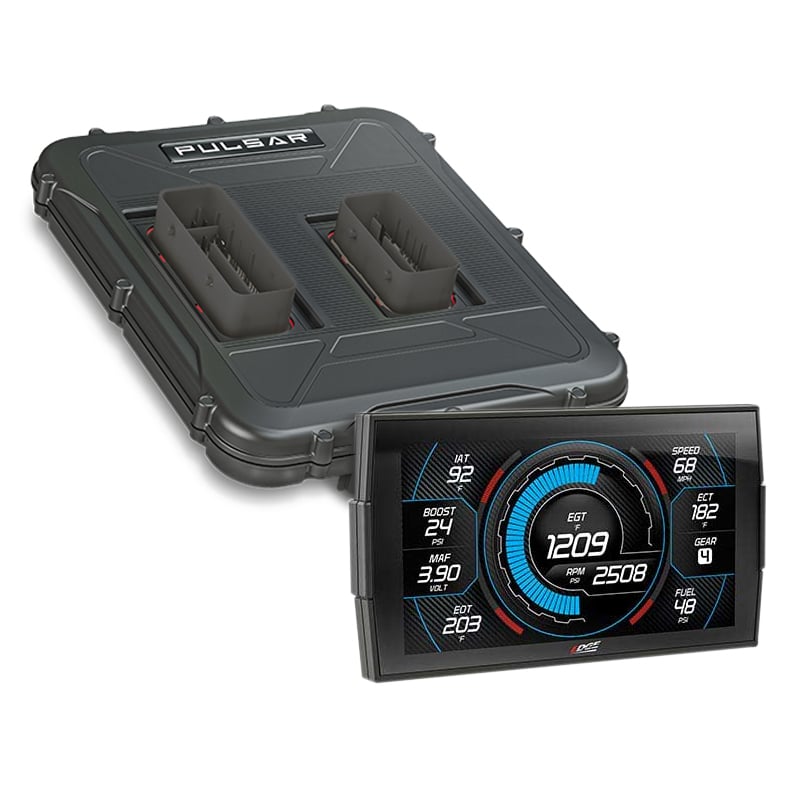
Both Fleece Performance and Calibrated Power offer drop-in turbo upgrades that will flow more air than stock but still offer the quick throttle response and spool up time of your factory VGT. The Fleece Cheetah uses a 63mm compressor wheel and the Calibrated Power Stealth 64 measures in 1mm larger, but they both offer the same benefits. They are based off a stock turbo so they will bolt right in with zero modifications required to your intake or exhaust systems, and the stock computer will still control the VGT functionality just like it did before. The best part is, both turbos will support 650-wheel horsepower at a cooler temperature than stock, and your turbine braking ability will still work which means a 63 to 64mm drop in turbo is the ultimate upgrade for any diesel truck that still needs to tow and haul.
Do Your Own Research (And Lots Of It)
When it comes to modifying your truck, you need to spend tons of time researching the parts you want to install, and how they will affect the drivability of your truck. Sure, parts like a massive S400 fixed vane turbo and 100 over injectors sound fun, and the idea of an 800-horsepower truck is appealing, but in the real world those particular parts will cause slower spool up, increased soot production, and higher EGT which means more frequent regen, and even potential damage to your emissions systems. When modified properly, your truck will drive better than stock, have safe EGT control, quicker throttle response, and will get slightly better fuel mileage all while maintaining the factory reliability of the engine. Sure, you might have to invest a few dollars into your transmission, but that’s standard operating procedure when dealing with engines that can easily exceed 1,000lb.ft. of torque.

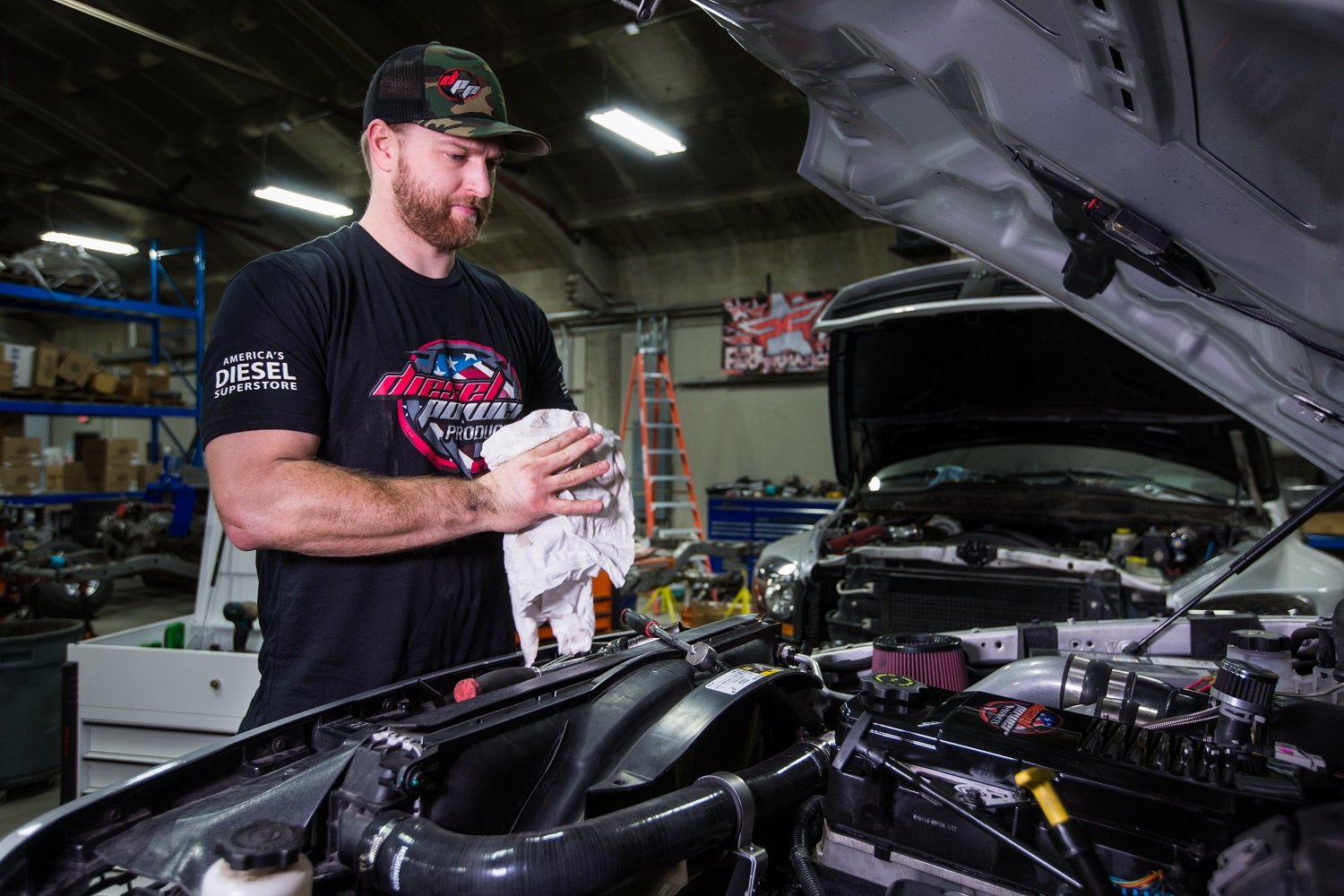
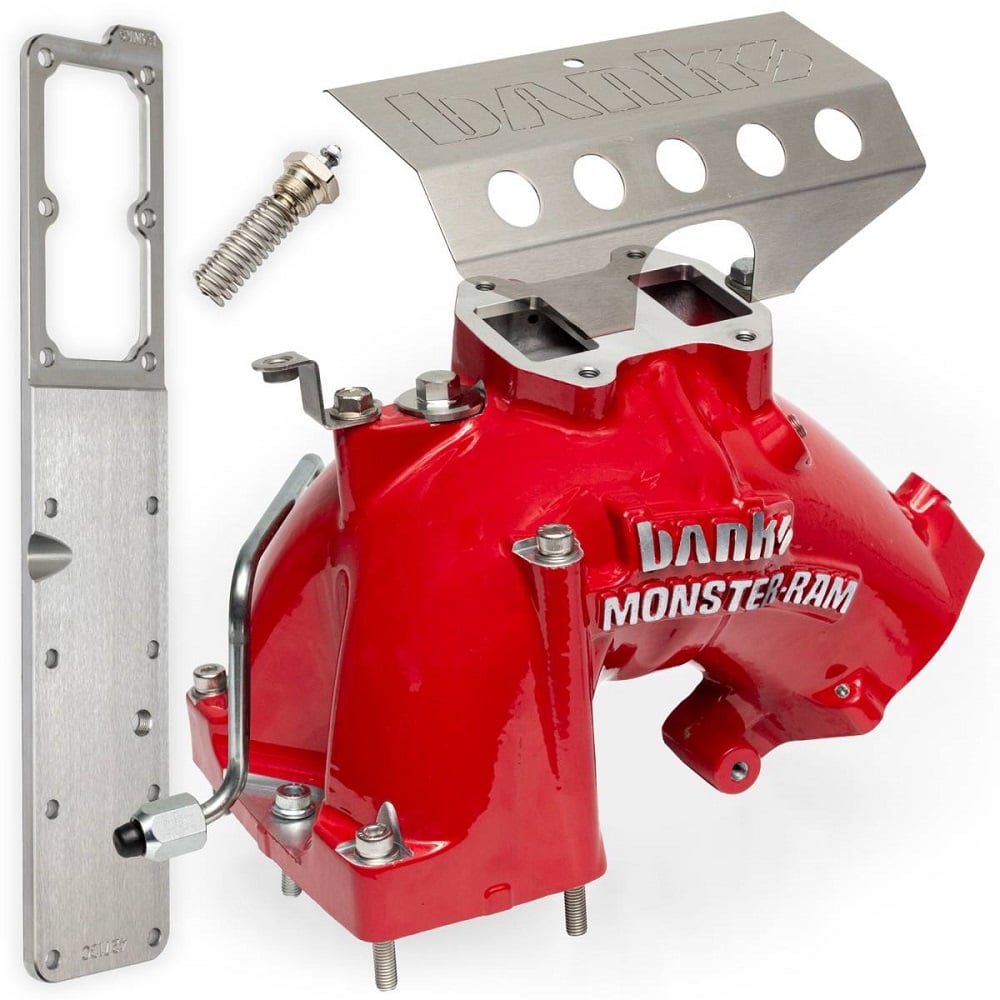
The add seem to be all around diesle trucks and as I read it was geard towards Cummins , next time state thate in the headline you would have saved 10 to 15 minutes of my life due to being a powerstoke owner and could care less what dodge does ,, thank you
Great article! I appreciated the basic point which is the deletion and shortened engine life are not neccessary today to add horses, torque and drive ability to any American brand Diesel engine. I felt that you covered duramax a lot too and mentioned Ford plenty so I think the point made by the previous commenter was really just a matter of, “ you didn’t tell me what to buy!” Which was not the point of the article. Thanks for a good solid article!
The hardest part about being a powerstoke owner is telling you’re dad you like boys.
Great article and a “must read” before you do anything to add power.
I added a K&M cold air intake to my new 2023, ram 2500 with the 6.7 Cummins from the factory I was getting 23 miles to the gallon at 70 and after installing the K&N air intake I’m getting 18 miles to the gallon Something else definitely up